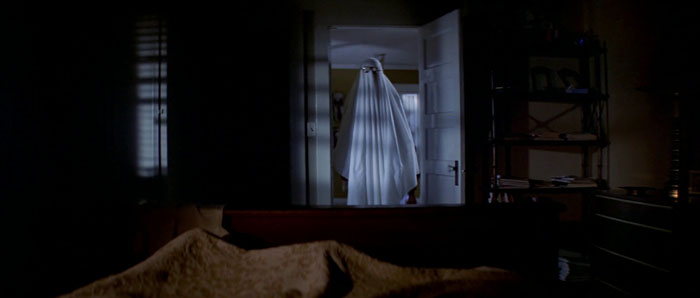
Staff Writer: David McCallister
Before the abundance of rehashed slasher films grazed the silver screen, the small team of John Carpenter, Debra Hill, and Moustapha Akkad worked together to make a simple movie titled Halloween. The premise is simple, after murdering his sister 15 years prior, Michael Myers escapes his mental institution. His one goal; return to his hometown of Haddonfield on the very night he killed his sister to continue his rampage.
With this simple premise and fantastic execution, Halloween is one of the best horror films ever made, and the testament stands its time. The film is intense with tension, a great cast of newcomers and veterans of film, and includes the most terrifying antagonist to ever be put on film.
Halloween on the surface is a very simple film, both story and character wise. There is the final girl Laurie Strode, wonderfully played by Jamie Lee Curtis in her first film role. There is also the late Donald Pleasance, who plays Michael’s psychiatric doctor Samuel Loomis.

While both Laurie and Loomis are different in their intentions and actions throughout, they create a fantastic dynamic with Michael Myers, who does not speak at all in the film. Seeing how Laurie confronts Myers, compared to Loomis’ foreboding and almost scientific view into Myers and his mental state creates an underlying look at how some perceive evil and how others like Loomis see mental health and the “science” of people like Michael Myers.
Michael Myers is the definition of evil. His presence, his motives, are nonexistent. With the audience not knowing why Michael is attracted to killing, and his methods of murder make him formidable and unpredictable. He is a fantastic villain, and the testament to that has been shown with multiple sequels, spoofs, and copycats.
The writing of Halloween is crafted well. There are moments where expository dialogue slows down the scene, but it shortly picks up after. The way John Carpenter and Debra Hill wrote the screenplay makes the audience cautious of everything on the screen, and to always be vigilant of Michael and his whereabouts.
Halloween’s soundtrack is composed fantastically by Carpenter too. Made in just an afternoon, the iconic Halloween theme with the title credits sets the mood for the rest of the film and is iconic in cinema history. The score captures that fear and eeriness of Haddonfield, without this score, the film’s overall emotional effect would suffer.
There can’t be talk about Halloween without talking about the practical effects. Since the budget was small, the work that goes into the kills is trivial compared to today’s horror films. But while the kills are usually done in the shadows or with obscurity, it is effective based on the performances.
The cast of teenagers make the terror feel real, and sell that Michael is a force to be reckoned with. It’s incredibly effective in the opening scene, all the way up to the final shot.
The film is paced very consistently from start to finish, but as said earlier there are expository scenes that drag the film in certain parts. But this is thankfully not a big issue, as the tension of Michael’s whereabouts really make every scene filled with paranoia and caution for both the characters and audience.
Halloween is considered one of the first and best slasher films ever made, and it stands to that testament. The film is fantastic, it creates a cold but needed energy for the Halloween season. It is a fantastic film to watch on Halloween weekend, and is a classic on its own merit.